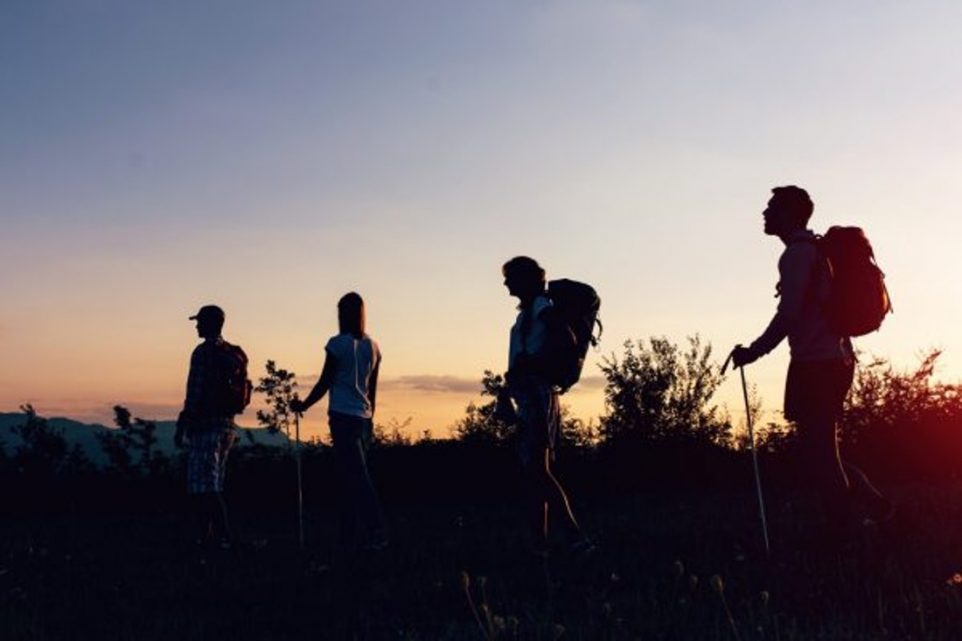Hiking at Night: What You Need to Know Before You Go

Hiking is a beloved outdoor activity that allows individuals to connect with nature, exercise, and enjoy the beauty of the natural world. While many hikers prefer to venture out during the day when visibility is high, and the weather is typically more predictable, there is a growing trend of people exploring the trails at night. Hiking at night can be a unique and rewarding experience, but it comes with challenges and considerations.
In this blog, we’ll explore what you need to know before hiking at night. From choosing the right trail and understanding the moon’s impact to essential gear, safety precautions, and embracing the beauty of the night, we’ll provide you with valuable insights to ensure your nighttime hiking adventure is both enjoyable and safe. So, prepare to step into the world of nocturnal exploration, where the wilderness takes on a whole new dimension under the stars.
Choose the Right Trail
Selecting the right trail is crucial when planning a nighttime hike. Select a trail you are familiar with and have hiked during the day. Familiarity with the terrain and landmarks will help you navigate more safely in the dark. Additionally, choose a trail that is well-maintained and marked, as it can be more challenging to spot trail markers at night.
Check the Moon Phase
The amount of moonlight can significantly impact your nighttime hiking experience. A full moon provides ample natural light, making seeing the trail and your surroundings easier. On the other hand, hiking during a new moon (when the moon is not visible) will result in very little natural light. Plan your hike around the moon phase to ensure a more enjoyable and safe experience.
Proper Gear and Clothing
Hiking at night requires specific gear and clothing to ensure comfort and safety. Here’s a checklist of essential hiking items:
- Headlamp or flashlight: A hands-free headlamp is ideal for night hiking. Bring extra batteries or a backup light source, such as a tactical flashlight, if your primary one fails.
- Appropriate clothing: Dress in layers to stay warm, and wear moisture-wicking fabrics to keep sweat away from your body. Don’t forget to wear sturdy hiking boots with good traction.
- Reflective gear: Attach reflective tape or wear reflective clothing to make yourself more visible to others, especially if you’re hiking near roads or in areas with potential hunting activity.
- Navigation tools: Carry a map, compass, or GPS device to help you accurately navigate the trail and pinpoint your location.
Plan for Wildlife Encounters
Nocturnal animals are more active at night, and you may encounter wildlife you wouldn’t typically encounter during the day. Be prepared for encounters with animals like owls, raccoons, or even larger wildlife such as deer or bears. Make noise periodically to alert animals to your presence and reduce the likelihood of surprising them.
Hiking With a Group
Hiking at night is generally safer when done in a group. If you’re planning a nighttime hike, invite friends or fellow hikers to join you. A group provides additional safety and support in emergencies and can be more enjoyable as you share the experience with others.
Safety Precautions
Prioritize safety when hiking at night. Inform someone you trust about your plans, including your expected return time and the trail you’ll be on. Carry a fully charged cellphone, but don’t solely rely on it for navigation or communication, as you may not have reception in remote areas.
Slow and Steady Pace
Hiking in the dark requires a slower pace than daytime hiking. The reduced visibility means you must watch your step more carefully to avoid tripping on rocks, roots, or uneven terrain. Take your time and be mindful of each step.
Bring Essential Supplies
Pack essential supplies in your backpack, such as water, snacks, a first-aid kit, and an emergency blanket. These items can be a lifesaver if your hike takes longer than expected or if you encounter unexpected challenges.
Respect Nature and Others
Maintain good hiking etiquette by minimizing noise pollution, picking up all trash, and being respectful of other hikers who may be seeking a peaceful outdoor experience. Remember that some trails may have quiet hours to minimize disturbances to nocturnal wildlife.
Experience the Beauty of Night Hiking
Despite the unique challenges, night hiking offers a chance to experience the wilderness in a new light, literally and figuratively. The tranquil sounds of the night, the shimmering stars, and the sense of solitude can be incredibly rewarding. Take the time to pause and enjoy these moments during your hike.
Conclusion
Hiking at night can be thrilling and memorable but requires careful planning, the right gear, and understanding its challenges. Following these tips and taking safety precautions can maximize your nighttime hiking experience while staying safe and respecting the natural world. So, grab your headlamp, gather your friends, and embark on an unforgettable journey through the moonlit trails.
Your Adventure, Our Experience
At TheCampingList, our dedication to authenticity and reliability stems from our own adventures in the great outdoors. Our team, comprised of seasoned experts in hiking, camping, climbing, cycling, fishing, and hunting, rigorously tests every product and shares insights drawn from real experiences. This hands-on approach ensures our reviews and guides meet the highest standards of durability, functionality, and comfort. Moreover, our platform thrives on the rich contributions and feedback from our vibrant community of enthusiasts. We pride ourselves on delivering unbiased, educational content that empowers and informs your outdoor pursuits. Trust in TheCampingList for genuine advice and support, where we're all about enriching your journey, every step of the way.